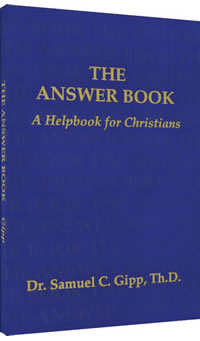Do New Manuscripts Strengthen the King James Bible?

From "The Answer Book" ©1989 Samuel C. Gipp. Reproduced by permission
QUESTION: I've heard that there have been many manuscripts discovered since 1611 that the King James translators didn't have access to. Do these strengthen or weaken the King James Bible?
ANSWER: They strengthen the King James Bible.
EXPLANATION: There have been many manuscripts found since 1611, but there have been no new READINGS found.
Many critics of the Word of God have used the argument of "new evidence" that the King James translators didn't have as a basis to degrade its authority. The fact is, that the King James translators had all of the readings available to them that modern critics have available to them today.
One of the most prominent manuscripts which has been discovered since 1611 is the Sinaitic manuscript. This witness, though horribly flawed, was found amongst trash paper in St. Catherine's monastery at the foot of Mt. Sinai in 1841 by Constantine Tischendorf.
Sinaiticus is a sister manuscript of the corrupt manuscript, Vaticanus. Both read very similarly. So, although the Sinaitic manuscript was discovered over 200 years after the Authorized Version was translated, its READINGS were well known to the translators through the Vatican manuscript which was discovered in 1481 and also through the Jesuit Bible, an English translation of 1582.
So we see that there are no readings available today to scholars which were not already in the hands of the King James translators. We might further add that an honest scholar will admit that this "great number of newly discovered manuscripts" that are trumped abroad, agree with the Greek text of the Authorized Version rather than challenging it.
- See more articles on related topics:
- Bible Versions
- Bible Translation
- History of Preservation
Products of interest:
-

Understandable History of the Bible
557 pages
You'll learn the history of the Bible in this well-documented but easy-to-understand book. -

Answers to Your Bible Version Questions
224 pages
David W. Daniels answers difficult questions about the KJV. Learn how to defend the KJV and why you can trust it. -

Which Bible Would Jesus Use?
342 pages
Everyone's got an opinion as to which Bible is best. If Jesus walked into your church, which Bible would He quote from? -

Look What's Missing!
256 pages
For years, publishers have been removing words, and even whole verses, from modern Bibles. What's missing from your Bible? Take a look!
